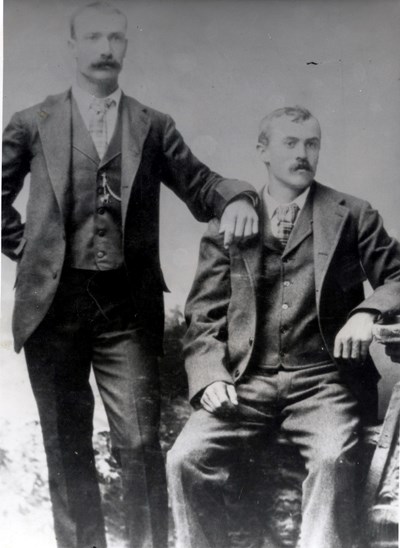
NPS Photo The earliest written account of Jewel Cave is a mining claim filed by Frank and Albert Michaud in 1900. The brothers described the entrance as a hole that was too small for human entry, with a blast of cold air coming out. After subsequent enlargement with hand tools and dynamite, they entered the cave with Charles Bush, a friend of the family, discovering crawlways and low-ceilinged rooms coated with beautiful calcite crystals that sparkled like "jewels" in their lantern light. The Michauds filed the "Jewel Tunnel" mining claim in Custer on October 31, 1900. Although calcite crystals have little commercial value, the mining claim allowed the Michauds and Bush a relatively fast and easy way to control access to this natural wonder. It is theorized that they had always planned to use the cave for tourism, possibly inspired by Wind Cave National Park, established in 1903. The Michauds did mine and sell some of the crystals to prove that it was an active mine. Most of the crystals were sold to a priest in Iowa who was building a church out of crystals from all over the world. During the following decade, they constructed a trail within the cave, built a lodge up on the rim of Hell Canyon, and even organized the "Jewel Cave Dancing Club" in 1902 to attract tourists. However, a lack of people in this region and the difficulty of travel at that time made the tourist venture anything but a financial success. Frank Michaud bought out Charles Bush's share of the cave in 1905 for $300. For a while, Frank continued to work at the cave, exploring and keeping up the annual assessment work. Due to the lack of success of Jewel Cave as a tourist attraction, the Michauds started to support themselves with other employment and even sold part of their claim to Bertha Cain. In a joint effort to increase visitation, the Michauds and Cain proposed a petition in 1906 to create the “Jewel Cave Game Reserve.” They hoped that a federally administered preserve would attract more visitors. U.S. Forest Service employees came out to investigate and survey the proposed game reserve. Unfortunately, because there is not much wildlife here, they denied the proposition. However, they suggested that it be designated as a National Monument because it contained “objects of scientific interest.” Jewel Cave was proclaimed a National Monument in 1908 by President Theodore Roosevelt. It was the first cave to ever be named a National Monument. |
Last updated: September 2, 2023
